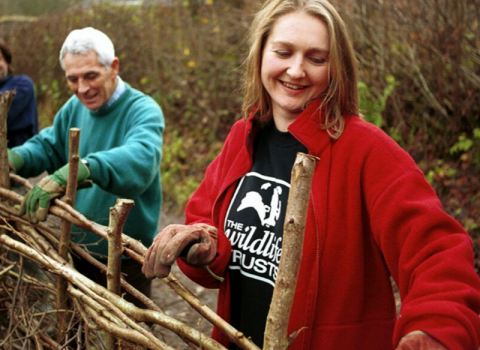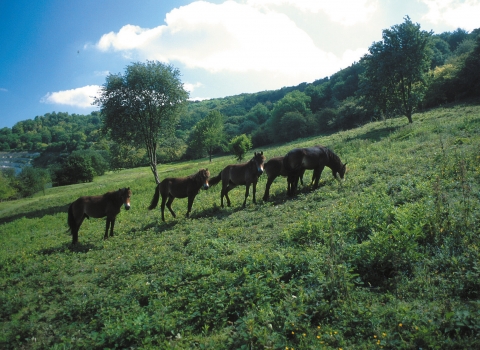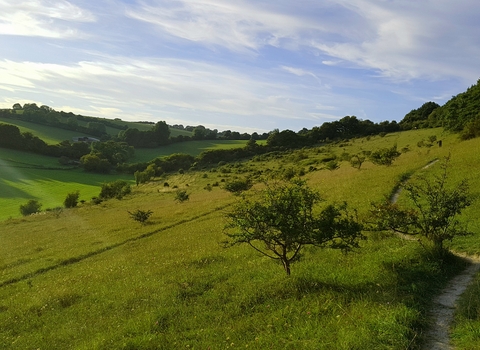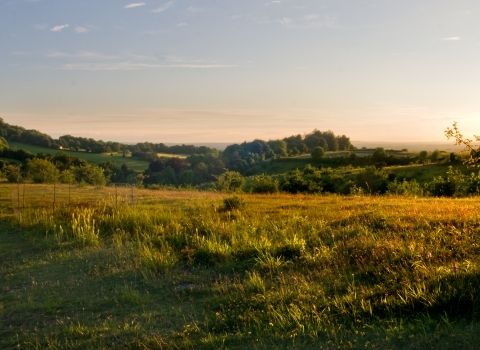
View from Chinnor Hill. Photo by Paul Martin
Chinnor Hill
Know before you go
Dogs
When to visit
Opening times
Open at all timesBest time to visit
All year roundAbout the reserve
The panoramic views from Chinnor Hill, which crown the Chilterns escarpment, are breathtaking.
Spring and summer flowers
The chalk grassland here contains an amazing variety of flowers in spring and summer, including several species of orchid and the nationally scarce Chiltern gentian. Pretty harebells can be found here, and if you look closely, you might spot the tiny white flowers of eyebright - once made into herbal remedies for eye disorders.
Birds and berries
Hawthorn, juniper scrub, yew, whitebeam and the wayfaring tree have colonised the once open area of grassland at the top of the hill. In spring, this scrub is alive with birdsong and in autumn, migrant bird populations are attracted to the banquet of berries. Chinnor Hill is also a great place to watch red kites soaring in the sky, as well as kestrels hovering above the slopes looking for prey.
Ash Dieback
A programme of ash dieback safety work is taking place at this site. Diseased ash trees can become very unstable and BBOWT is employing specialist contractors to fell or reduce diseased trees where they pose a risk to public safety. The work is being planned and timed to minimise the impact on wildlife. Healthy trees will be retained, and trees and shrubs will be allowed to naturally regenerate in the felled areas.
To find out more, read our ash dieback FAQs.
Prehistoric past
Chinnor Hill falls steeply to the Icknield Way, part of the ancient Ridgeway. Made up of prehistoric pathways that follow the chalk 'spine' of England, the Ridgeway is thought to be Britain's oldest road.
Things to do
- Try our circular Wildlife Walk (1 mile). Just follow the badger waymarkers.
- Look out for our seasonal guided walks.
Species
Contact us
Environmental designation

Volunteer with us
Our volunteers help us in so many ways - by working on nature reserves, helping at visitor centres, leading walks, training others and much, much more. Without our volunteers we would not be able to carry out much of our work.
For more information about volunteering for BBOWT, please get in touch with volunteering@bbowt.org.uk



